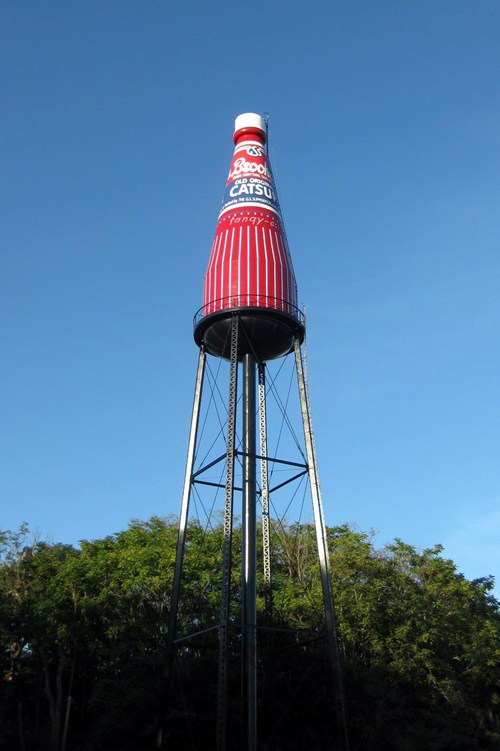STORY LINKS
Devil's Lake
Indian Giants
Mysterious
Lake Michigan
Le Nain Rouge
Paul Bunyan
Sleeping Bear
Dune
Valley
of the Giants
History of
Antique Bottles
Michigan
Salt Mines
Kitch-iti-kipi
Eastern Massasauga
Osage Orange
Past Articles
Questions, comments, submissions, & advertising
Contact BPP
|

 Michigan Chronoscope - Stories on the fringe of history
Michigan Chronoscope - Stories on the fringe of history
Chronograph Numeral IV - Fall 2017 - Page Five
|
Valley of the Giants
 One of many old growth forests stands in Michigan
One of many old growth forests stands in Michigan
The lumber boom in Michigan started in the 1830s. Before lumbering started the white pine, Michigan's state tree, was the most common tree found in the forests. The largest specimens were up to 300 years old, 200 feet tall, and as much as 8 feet in diameter. Although not as grand as the California redwoods, the comparison would have been a valid one. The peak of Michigan's great timber harvest was reached in 1890 when mills cut a total of 5.5 billion board feet of lumber. By 1900 most of the virgin white pine in the Lower Peninsula was gone with remnants of the virgin stands lasting until about 1920.
Today there are a few small patches of old growth and virgin stands left around Michigan. One of these is popularly known as the Valley of Giants. Located in the Traverse City State Forest southeast of Traverse City, it is a scenic stopover on the North Country Hiking Trail. The valley can be reached from the trail between Scharmen and Mayfield Roads, just east of the Boardman River. Follow the North Country Trail on the ridge down into the valley. Once you reach the bottom of the valley, it's a short trek to a wooden sign above the trail announcing the Valley of the Giants. From there you start walking among the giant trees heading up the valley. This section of the NCT is maintained locally by the Grand Traverse Hiking Club.
The Valley of the Giants is a deep forest valley with a brook named the 22 Mile Creek (a tributary of the Boardman River) with a hard-to-find entrance. Primarily known for its large old-growth trees, it contains white pine, red pine, cedars, and oak trees. Many of these old-growth trees are believed to be 200 or more years old.
There are other notable public and private old-growth forests in Michigan. The following is a short list of some of the most popular.
Hartwick Pines State Park, Crawford County, Grayling, MI 49738
Comprised of 9,672 acres, Hartwick Pines is one of the largest state parks in the Lower Peninsula. The park's rolling hills overlook the river valley of the East Branch of the AuSable River. The park contains four small lakes and unique timberlands. The principal feature of this park is the 49-acre forest of old-growth pines which gives the park its name. The park is open from 8 a.m. to 10 p.m. year-round.
Coalwood Hemlock Old Growth Forest, Hiawatha National Forest
The Hiawatha National Forest is the only National Forest with lands touching Lakes Superior, Huron, and Michigan and is known as "the Great Lakes National Forest". Here you will find historic lighthouses like Point Iroquois and Peninsula Point as well as scenic shorelines at places like Whitefish Bay Scenic Byway. There are also recreation sites such as Grand Island National Recreation Area and numerous ski and hiking trails including the North Country National Scenic Trail and Haywire & Coalwoods ORV Trails.
Fred Russ Forest, Cass County Parks, Cassopolis, MI 49031
Located along the Volinia Creek, Russ Forest and Newton's Woods County Park main feature is its old-growth forests. Russ Forest is considered a national landmark with 737 acres of virgin black walnut and white oak. The park is located 8 miles east of Dowagiac at the intersection of Marcellus Highway and Decatur Road.
In addition to these public old-growth stands, there are a few lesser-known stands on private property. Not far from where I live is a 40-acre old growth white pine stand near the Croton Dam on the Muskegon River known locally as Sailor's Virgin Pines. It can be found a mile northwest of Croton Dam off Pear Road near the Croton Pond. The owners will allow visitors to walk the property and take pictures. There are probably more of these private stands known to the local inhabitants all around Michigan if you research to find them.
Comment about this article on the
Epress Forum Board
.

|
|
|
History of Antique Bottles
 World's Largest Catsup Bottle
World's Largest Catsup Bottle
Littering anywhere is a crime and rightly so, but our public lands have been and still are being illegally dumped on. It doesn't take long while wandering around the federal or state forests to come across a pile of rubbish. These dump piles could have been deposited recently or more than eighty years ago. As illegal and unsightly as dumping trash is, it does give us a tangible link to the past with the objects they contain.
The most numerous and often found artifacts in a dump mound are glass containers. Although glass is naturally fragile, it survives exposure to the elements and will remain intact buried in a garbage heap. As common as disposable glass containers are, their use has declined over the years to the point where they are becoming rare and more valuable. Rare old bottles with colored glass and bottles with an attractive design have a greater value than more common ones. A bottle's history, its use, the location where it was found and its ownership creates provenance that adds to its value.
I had a small collection of bottles for many years, but no real interest in collecting. However, since I've recently found out that most antique and vintage bottles are worth more than a ten-cent deposit, I will retrieve what bottles I can where I find them. By keeping glass bottles and containers that I find, I not only help clean up trash, but I rescue history that was carelessly thrown away.
Outside of finding bottles in old trash piles, purchasing a collection of antique bottles is more affordable than collecting most antiques. The rarest and most desirable ones can sell for hundreds if not thousands of dollars to the right collector. But for me and other collectors, the history of a bottle, its look, and how it was manufactured, are more important than its value as a commodity for sale.
Here is an example of an antique glass container I owned for many years and ignored until I did some research on it. It's a circa 1940s 12 oz. "Brooks Old Original Catsup" bottle. A fluted condiment bottle manufactured by the Owens-Illinois Glass Company.
The fluted sides go up to a flat rectangular area with the words "tangy-est" embossed on the front and back near the shoulder. The bottom has the embossed words "Brooks" in cursive script and "Duraglas".
The bottle's design is noteworthy, however, its history is what interests me the most. It turns out that this catsup bottle is related to early automobile tourism and roadside "tourist traps". The Brooks Catsup Company was located in Collinsville, Illinois on the fabled Route 66. It is best known for the "world's largest catsup bottle", a 70-foot tall, 100,000-gallon, catsup bottle-shaped water tank on a 100-foot water tower. The bottle I have is a Brooks Old Original Catsup bottle, their best seller back in the day.
That history has me imagining myself on a road trip back in the 1950s, touring Route 66 and stopping at all the roadside spectacles along the way. As I'm passing through Illinois I see the giant catsup bottle and decide to have a closer look. After my visit, I hit the road with some postcards and a case of Brooks Old Original Catsup in the back seat.
Comment about this article on the
Epress Forum Board
.
|
Dump Diggers
Antique Bottles & Glassware
We buy and sell contemporary, old, vintage, antique
and heirloom glass bottles and containers.
Although fragile, glassware is extremely durable and will survive intact after being discarded in trash heaps and dumping grounds for countless years with the history they represent preserved along with them.
It is a main part of our mission to help recover and preserve history by rescuing glass bottles and containers from dumps and other trash deposits and by providing the historical context of these modern archeological artifacts.
The glassware in our inventory is researched and described in great detail to provide the buyer with a certificate of authenticity containing the proof of artifact identification, age, history and contact information to start a line of provenance
Visit the Dump Diggers Antique Bottles
& Glassware website
Dump Diggers
to view our inventory of antique bottles.
|
|
|
Keywords: Michigan, Great Lakes, history, amazing, astonishing, baffling, bizarre, cryptic, curious, different, extraordinary, forgotten, hidden, incredible, inexplicable, legends, lore, lost, myths, obscure, odd, peculiar, rare, stories, strange, surprising, tales, unexplained, unfamiliar, unique, unknown, unusual, weird
|
|



